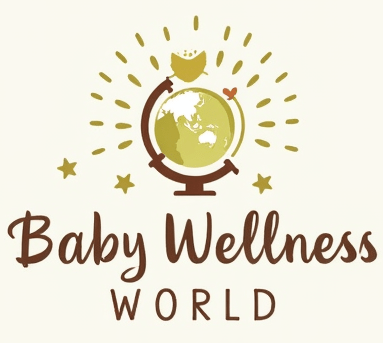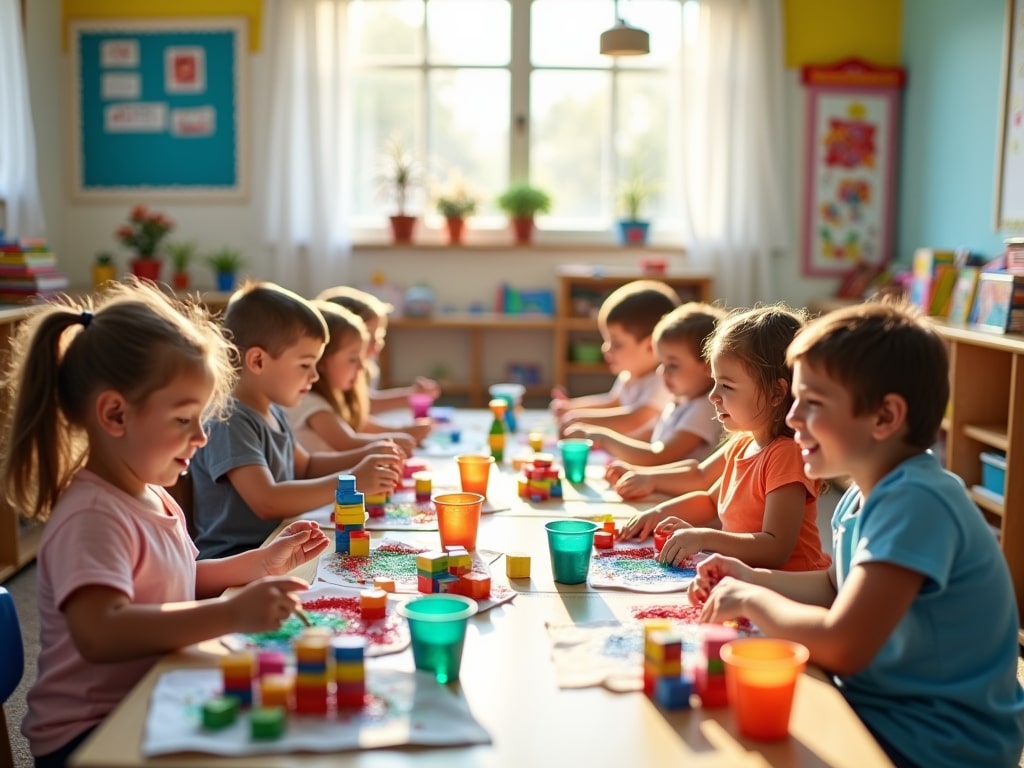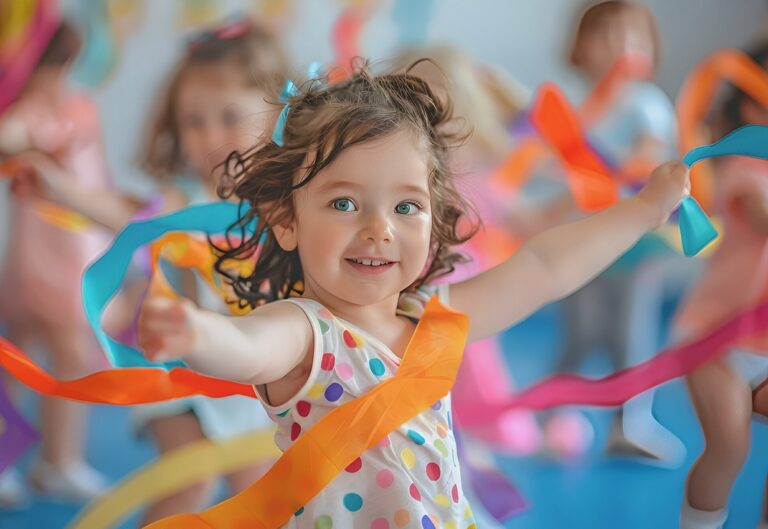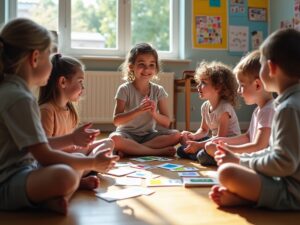The first day of school is a milestone—full of excitement, anticipation, and sometimes a few jitters—for both kindergartners and their families. It’s the day when children step into an unfamiliar environment, ready to embark on a journey of learning and exploration. For educators, setting the tone with thoughtful, engaging activities can ease the transition, foster confidence, and encourage connections. These seven enjoyable first-day activities will help nurture independent minds while empowering the next generation to embrace the joy of learning.
Why First-Day Activities Matter in Kindergarten
The first day of school sets the foundation for a year of growth. Structured yet playful activities help channel kids’ energy, reduce anxiety, and introduce them to routines and expectations. A positive start ensures children feel confident, valued, and excited about their learning journey.
Benefits of First-Day Activities
- Smooth Transition: Helps children adapt to the new environment.
- Encourages Social Interaction: Activities build friendships and teamwork.
- Boosts Self-Confidence: Engaging tasks give children a sense of accomplishment.
- Introduces Routines: Sets the stage for a structured classroom environment.
1. Welcome Circle: Breaking the Ice
Start the day with a welcome circle where everyone gathers to introduce themselves. This informal yet structured activity helps children feel included and valued.
- How It Works: Each child says their name and shares something fun, like their favorite color or a toy they love.
- Benefits: This activity promotes social interaction and helps educators learn about their students.
- Pro Tip: Use a soft, colorful toy (like a “talking stick”) to signal whose turn it is to speak.
Why It Works: The welcome circle creates an atmosphere of belonging. Even the shyest kids feel encouraged to participate when they see others sharing too.
2. Name Craft: Personalizing the Experience
One of the first steps to fostering independence is helping children claim ownership over their space. A name craft activity is perfect for this!
- Activity Details: Provide materials like colorful paper, glue, stickers, and markers. Ask children to create a name banner to display on their cubbies or desks.
- Benefits: This activity reinforces name recognition, fine motor skills, and creativity.
- Pro Tip: Encourage children to use their favorite colors or add drawings of things they love, making their creation uniquely theirs.
A simple yet meaningful task, the name craft serves as a physical reminder of their identity and individuality within the classroom.
3. Storytime Adventure
A well-chosen story can work wonders in calming nervous energy while teaching important lessons about kindness, friendships, or adjusting to school life.
- What to Read: Books like The Kissing Hand by Audrey Penn or First Day Jitters by Julie Danneberg are ideal for the first day.
- Interactive Component: Pause during the story to ask questions or let kids predict what might happen next.
- Why It Matters: Storytime helps children relax, expands their imagination, and nurtures listening skills.
Follow up with a discussion or a coloring activity based on the story’s themes.
4. Classroom Scavenger Hunt
Nothing sparks curiosity like a scavenger hunt! This activity encourages children to explore their new surroundings and feel more at home.
- How It Works: Prepare a simple checklist with items to “find,” such as the classroom library, cubbies, bathroom, or art supplies.
- Pairing Fun with Structure: Group children into pairs or small teams to promote collaboration.
- Rewarding Participation: Hand out small prizes (like stickers) for completing the hunt.
This activity familiarizes children with the classroom and builds confidence in navigating their new space independently.
5. All About Me Posters
Helping children share more about themselves is a great way to celebrate diversity in the classroom.
- Activity Instructions: Provide pre-printed posters with prompts like “My favorite food is…,” “I want to be a… when I grow up,” and “I love to…”
- Materials: Include crayons, markers, and age-appropriate images for decoration.
- Why It Matters: This activity helps children express their individuality and learn about their peers.
Display these posters on a classroom wall to create a sense of community and pride among the students.
6. Movement Games: Energizing Little Learners
Young children thrive when physical activity is part of their day. Movement games are not only fun but also help break up sitting time.
- Game Ideas: Try classics like “Simon Says,” “Red Light, Green Light,” or a dance session to cheerful music.
- Benefits: These games boost motor skills, listening, and coordination while burning off excess energy.
- Calm Finish: After the activity, guide the children through a brief breathing exercise to help them refocus.
Incorporating movement into the schedule ensures kids feel energized, engaged, and ready to learn.
7. Friendship Bracelets: Building Connections
Introduce an activity that encourages children to make new friends while they work on a creative project. Friendship bracelets are an enjoyable, hands-on way to accomplish this.
- How It Works: Provide colorful beads and strings. Encourage children to exchange bracelets with a new friend.
- Social Skills Focus: This activity promotes sharing, communication, and collaboration.
- Positive Reinforcement: Recognize and praise acts of kindness during the activity.
By focusing on collaboration, this pursuit subtly emphasizes the importance of empathy and teamwork.
Key Takeaways
- Blend Fun and Structure: Engage children with playful activities that have clear objectives.
- Celebrate Individuality: Provide opportunities for kids to express themselves freely.
- Encourage Interaction: Foster friendships through collaborative pursuits.
- Ease Anxiety: Use creative and calming routines to make the first day welcoming and positive.
FAQs
1. How can I help a shy child feel comfortable on the first day?
Create a supportive environment by pairing shy children with a buddy. Engage them in group activities where participation feels natural, like the scavenger hunt or name craft.
2. Are movement games necessary for kindergartners?
Yes! Movement games help children release energy, sharpen motor skills, and improve focus. They’re an essential balance to quieter, seated activities.
3. Why is storytime important on the first day?
Storytime offers a calming moment in a whirlwind of new experiences. It nurtures listening skills and helps children feel secure through relatable tales of first-day adventures.
By incorporating these dynamic and purposeful activities into your first-day plan, you set the stage for a successful and joyful kindergarten experience. As educators nurture independent minds, each pursuit becomes a stepping stone to empowering the next generation.










